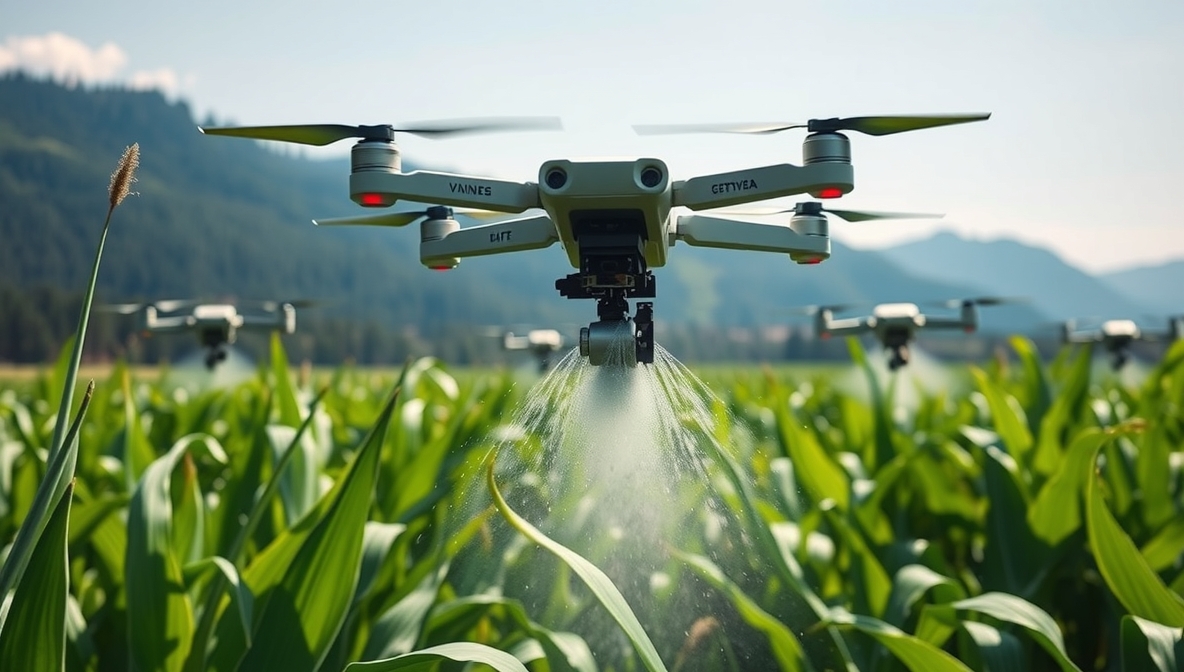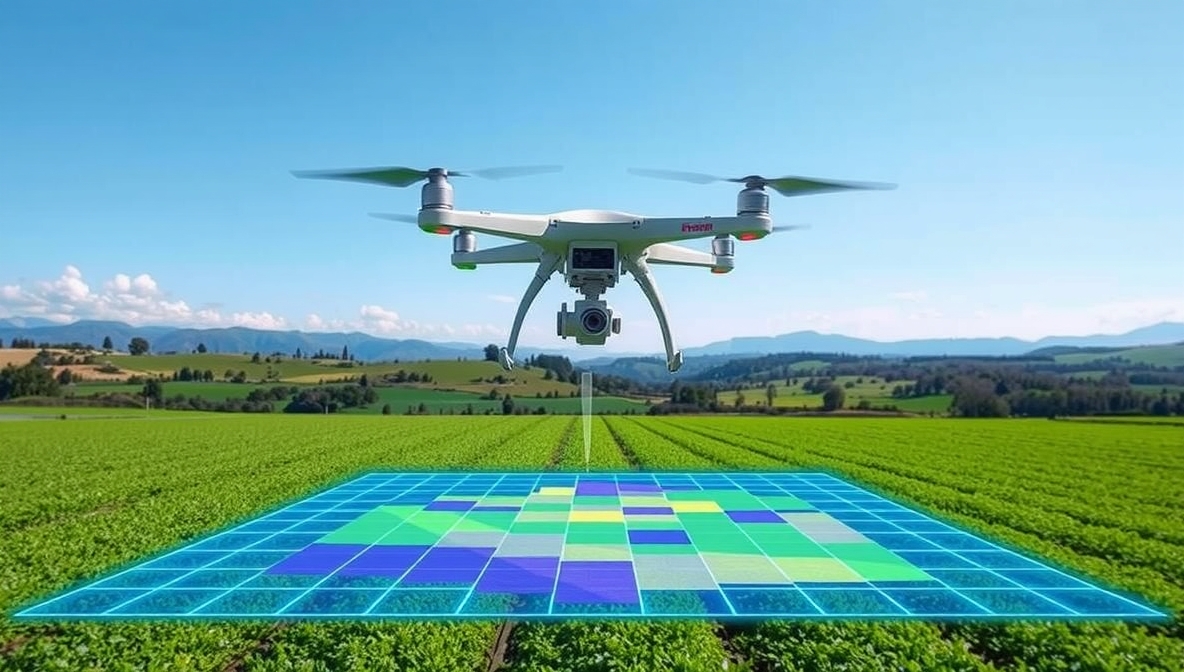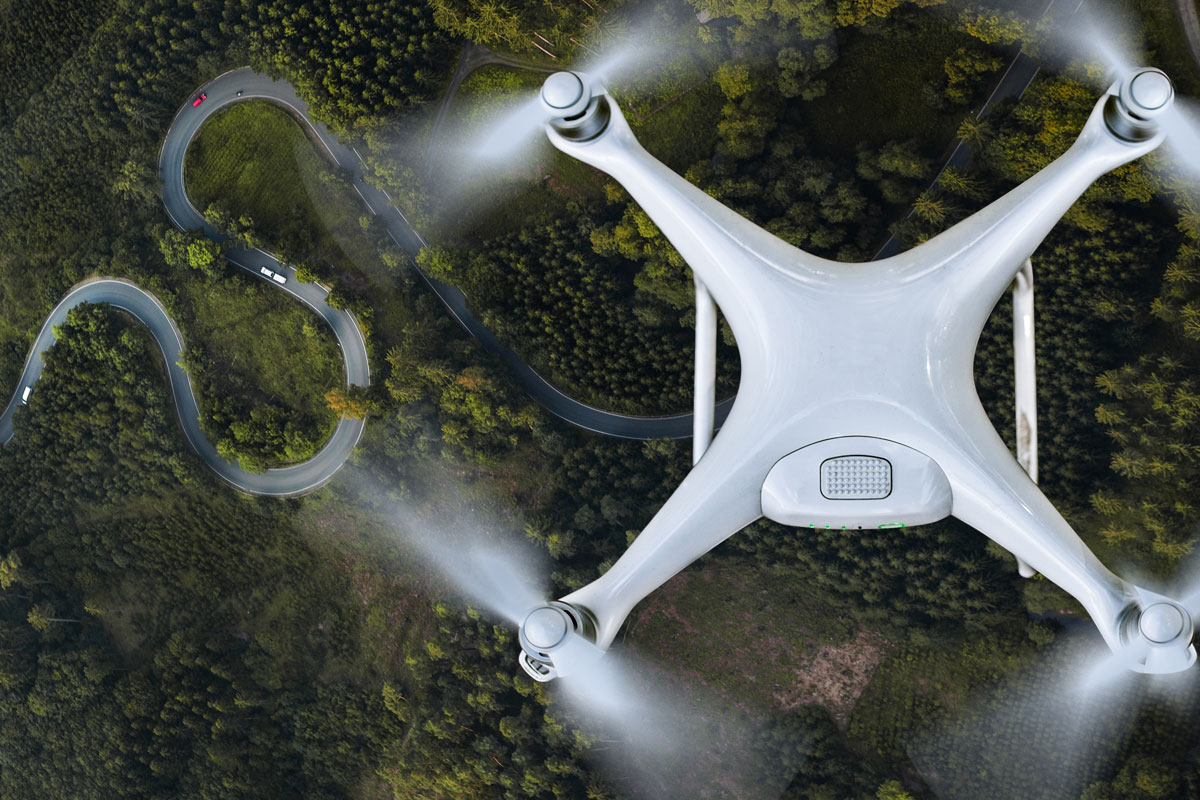
Unmanned aerial vehicles (UAVs), also known as drones, are making an impact on agriculture. Beyond their initial applications in videography, real estate listings, concert footage, and surveillance, drones are now poised to transform farming.
The nonprofit trade group Association for Unscrewed Vehicle Systems International (AUVSI) predicts that 80%1 of the global commercial drone market could soon be devoted to agricultural uses. By 2025, that number could be 90%2.
Agricultural drones are one tool under the umbrella of precision farming, which covers everything from smart sensor-controlled irrigation systems to AI-enabled weeding machines. The business of precision farming is expected to nearly double from $8.5 billion in 2022 to $15.6 billion3 by 2030.
Why Use Drones for Farming?
The benefits of using drones for agriculture could be significant. The traditional method of relying on spraying tractors dispensing herbicides in veritable waterfalls to kill weeds that are often scattered and tiny in big-acre crops like wheat and corn has been ineffective and expensive. The runoff has been bad for the environment, and the overkill method can lead to millions of dollars wasted for farmers.
In contrast, artificial intelligence (AI) employed by drones can identify weeds with 96%3 accuracy for a more targeted (and time- and money-saving) approach to treatment.
In the U.S., both the Environmental Protection Agency (EPA) and the Federal Aviation Administration (FAA) have approved licensed drone operators for remote aerial spraying4. That decision has removed from many farmers the costly and time-consuming burden of hiring helicopters and planes for the same task.
How Else Could Drones Be Used in Farming?
Precision farming, driven by aerial data, is transforming how farmers work. Here’s a look at other common or emerging applications.

Aerial Survey
UAVs use a combination of red, blue, and green (RBG) cameras5, thermal imaging6, and multispectral imaging7. With the right tools, an operator can fly a drone over a field and efficiently collect data with unprecedented detail for the farmer, providing overviews of their livestock, crops, and land.
Pollination
Scientists in Japan built drones the size of insects to pollinate flowers in the same manner as bees. The drones use GPS to select the best flight path for pollinating all plants in a given area. With global bee populations on the decline, drones like these could be lifesavers as the world’s need for food production grows.
Tree Planting
Canadian researchers developed a drone in 2020 that used a pressurized air cannon to fire small seed pods into the soil. The researchers estimate that one drone operator could potentially plant 100,000 seed pods a day. Long-term goals include planting one billion trees by 2028.
Yield Estimation
Precision farming using the drone’s accurate RGB sensors helps estimate crop yield of crops8 more effectively, even before a harvest begins, to help predict the stock volume.
Irrigation and Soil Management
Accidents, including machinery failures, under-irrigation, and water and fertilizer wastage, can damage plants. Drones can spot soil and irrigation problems early and allow farmers to analyze typographical changes, mineral levels, and topsoil degradation before they can cause irreversible harm.
Forestry Management
Drones can effectively and timely provide information to forest managers to help them care for forests, woods, and wetlands, especially in dense or inaccessible areas or following natural disasters.
Cattle Monitoring
With drones, farmers can remotely check on the health of their cattle, including their location, nearby water sources or problem areas, and conditions of pastures and fences.

Three Case Studies for Agricultural Drones
Here are three real-world examples of companies currently using UAVs to advance critical goals in agricultural settings.
Case Study: Taranis
Taranis is a drone services company headquartered in the U.S. with a mission to provide “AI-powered crop intelligence solutions.” They offer drone-based monitoring of their clients’ crops9, mostly cotton, soybeans, and corn.
Their drones collect images of each field with sub-millimeter resolution every 10 days for 4 to 6 passes per season. The drones can track insect infestations, weed invasions, crop stress or nutrient deficiencies, and other ground-level developments. As of 2022, Taranis drones were deployed on three million acres of farmland.
Case Study: Precision AI
A Canadian start-up called Precision AI has developed a drone to locate, identify, and kill weeds in a targeted manner that avoids the traditional over-drenching of chemicals. Precision AI trains its algorithms with images of 15,000 plant species to distinguish weeds from their surrounding crops.
The drone can spot anything bigger than half a sesame seed, using AI to identify weeds with 96% accuracy and then spraying only the intended target. Compared to traditional methods, this AI-enhanced approach could reduce the use of herbicides by 90%.
Case Study: Tevel
Israeli start-up Tevel has built a system of flying autonomous robots (FARs) that can identify and gently pick only the ripe fruit from trees for collection10. The system’s eight drones connect to a platform that uses AI and machine learning to analyze images of the fruit captured by their cameras. The technology can help identify ripe fruit, sugar content, or possible diseases.
Now used in Israel, the U.S., Chile, and Italy on more than 40 different species of fruit, this technology could help make fruit harvesting more efficient at a time of climate change impacts and worker shortages.
The Future of Farming With Drones
The agricultural industry has only just begun to dig into the benefits of drone technology. As researchers continue to explore methods of integrating aerial data collection into agricultural operations, big advancements in crop production are likely.
Smart advancements in technology like UAVs could be a critical solution to increase farmers’ profitability and efficiency, reduce the environmental impact, and boost food production to support the ever-growing global population.
Indeed, AI stands to touch everything in agriculture, from seed planting to harvesting to shipping food products to grocery stores, and these revolutionary techniques are already drastically transforming the industry, improving the lives of people worldwide.
Ambiq® is uniquely committed to reducing the carbon footprint, creating edge intelligence and technology that offers more efficient energy use. In agriculture, for example, Ambiq’s Apollo has been used in food smart labels for more efficient tracking, production, and transportation. Other Ambiq innovations are ready to support AI-enabled technologies in agriculture to increase the food supply, reduce the carbon footprint, support farmers, and bolster sustainability efforts.
Resources
1 How Unmanned Drones Could Affect the Food Industry | January 26, 2015
2 Drones in Agriculture | 2015
3 AI Weed-Killing Drones Are Coming for the Mega Farms | April 19, 2023
4 Welcome to the Next Generation of Agricultural Drones | June 19, 2023
5 What are RGB Cameras? | May 19, 2022
6 Thermal Imaging: A Colorful Introduction
7 How Corn Farmers Use Multispectral Imaging in the Field
8 Drones in Agriculture: Mapping Solutions With Agricultural Drone Technology
9 Farm With a View: How Drone Technology Is Taking Agriculture to a New Level | February 23, 2023
10 Fruit Picking Robots Take Flight, Just When You’ve Seen It All | August 2, 2023


